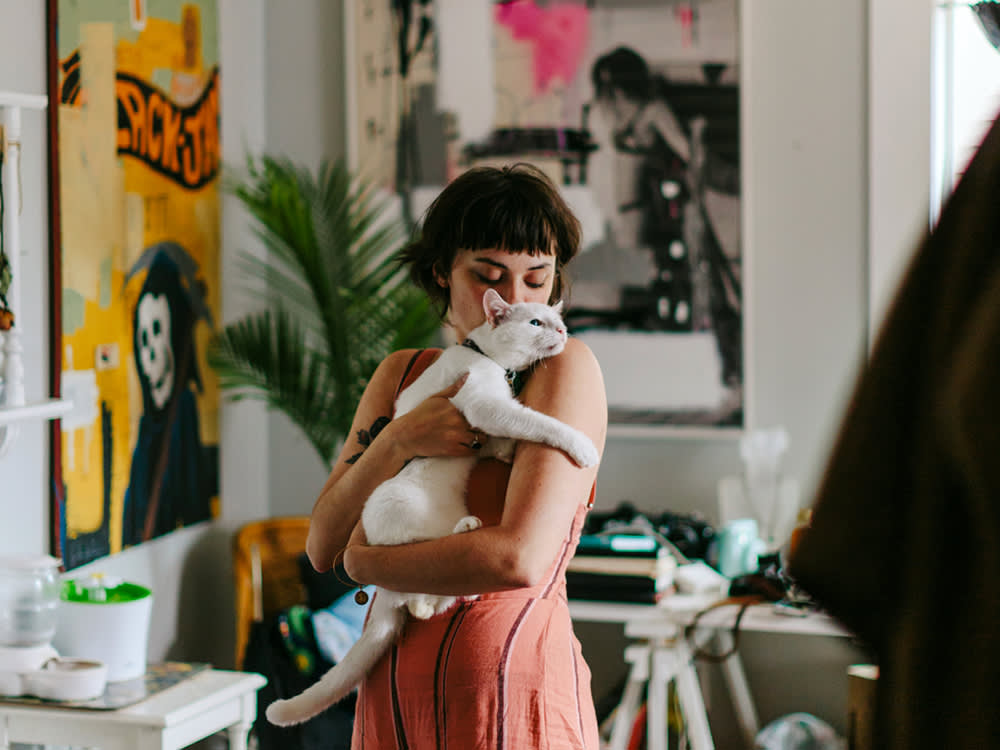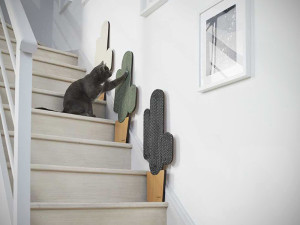Cats, Priceless. Cat Parenthood, Not So Much
A rundown of the most common cat expenses

Share Article
Your kitten’s first meow, pounce or warmhearted headbuttopens in a new tab? Priceless. Some other aspects of cat parenthood? Not exactly complimentary. Many new cat parents mistake low maintenance for low budget, and are surprised to find that the costs associated with keeping a cat healthy add up quickly.
According to vet Dr Annette Louviere, “it’s easy for pet parents to focus on the essentials, like litter boxesopens in a new tab, food bowls, scratching postsopens in a new tab and toysopens in a new tab, but we have a tendency to less often prepare for undesirable events, like medical emergencies.” That’s why it’s so important to make a game plan before you grow your family by one kitten (or two) – it’ll ease your stress knowing you’re prepared for anything life throws at you. Below, a rundown of the most common cat expenses, what to prioritise in those first few weeks and how to budget for future expenses.

littleKin™ is Kinship’s home just for puppy and kitten parents. Bop over to check out expert advice, new pet tools, and special deals—all curated for your newest family member.
opens in a new tabFirst, find your dream cat
The amount you spend on your cat is going to vary pretty dramatically depending on where you get them. If you buy a pedigree cat from a breeder, you can expect to pay anything from a few hundred pounds to well over a thousand. If you adoptopens in a new tab, the adoption fee will depend on where you are adopting from. The Blue Crossopens in a new tab typically charges up to £150, while your local RSPCA branchopens in a new tab could charge to adopt around £70-£90 for a non-pedigree cat.
Next, schedule the first vet visit
Well, that didn’t take long. Dr Shines recommends a wellness exam within the first few days of adoption: “It’s important to get a baseline or a bill of health so you have a good starting point.” If your cat isn’t already neutered, you can expect to pay between £50 and £100 to have this done, according to Cats Protectionopens in a new tab.
Pet insurance plansopens in a new tab can greatly reduce the price you pay out of your wallet for your pet’s health. CareCreditopens in a new tab is another useful tool: It essentially works as a wellness and health-only credit card that allows you to pay for your pet’s vet bill on a payment plan. If you make payments on time within your payment plan period of six, 12, 18 or 24 months on a purchase of $200 or more, CareCredit will not add interest, making it a more sound financial decision than traditional credit. CareCredit can be used for routine pet care — such as diagnostics, check-ups, parasitesopens in a new tab, and spay/neuter surgeries — as well as emergency care.
Rabies vaccines cost around $20. Your kitten will need a rabies vaccineopens in a new tab at around 16 weeks and will require another shot a year from then. After that, they’ll require a booster every three years. The costs of most other vaccines (like Feline Leukemiaopens in a new tab and Feline Distemper combo and Rabies) range from $30-$75. Kittens will need three sets of viral vaccines but check your cat’s records first to see what vaccines the shelter may have already provided. Other vaccines are recommended on a case-by-case basis, determined by your location and your cat’s lifestyle.
These are annual estimates…
Wellness exam (twice a year): $50-100
Spay/neuter surgery: $125-900
Monthly flea/tick and heartworm preventatives (replenished quarterly): $30-50
Vaccinations: $105-430+
Bloodwork (CBC) including biochemistry panel: $55-175
SNAP Feline Triple Test (screens for FELV, FIV & Heartworm antigen): $25-40
Microchipopens in a new tab and implantation: $40-50
Fecal sample: $15-60
Pet insurance: $25-100+
Emergency vet visits (depending on the severity of the issue): $250-1,500+
Then, stock up on standard supplies.
A four-pound bag of dry kibble starts at around $25 and will last about three months for a small cat. Plus, many veterinarians recommend mixing in or feeding your cat exclusively wet food, which will run you about $2 per can for the good stuff. It’s all uphill from there. The higher the quality of the cat foodopens in a new tab, the more expensive it will be. And if your cat has allergiesopens in a new tab or health concerns that require a special diet for, the price tag continues to go up. The same goes for cat treats, and you’ll probably spend more on treats in the first year, using them to train your kitten. Litter and litter liners are two items you can never have too many of. Regardless of the amount of cats in your household, you can expect them to pee or poop every couple of hours when they aren’t sleeping. Do the math!
Food (per month): $15-50+
Treatsopens in a new tab (per package): $5-10
Litter (per 40lb box): $15-40
Litter box: $10-150+
After that, itemize your support system.
Some of these expenses are arguably the most important ones. Perhaps this isn’t your first rodeo and you already have a perfectly good litter box sitting in the basement; if not, it might be time to go down a Yelp review rabbit hole and find a new one. If you work from home, you probably don’t need to worry about paying someone to stop in and play with your cat, but if you travel often it’ll be important to find a trusted sitteropens in a new tab. And remember, boarding costs can vary based on quality — do you want your cat spending the night at Holiday Inn or Ace Hotel?
Basic groomingopens in a new tab supplies: $10-15
Cat sitter or kennel: $20-45+
Last but not least, snag all the fun stuff.
Namely, all the things on your Pinterest board. Of course, the cost of these items will depend on your cat’s preferences (and your style) but we ballparked it.
Bedopens in a new tab: $15-200+
Scratching post: $12-275+
Nail clippers: $5-20
Collaropens in a new tab: $10-50
Toys: $10-100+
Food and water bowls: $4-50
Armed with this shopping list, you should be all set to start stocking up!

Avery Felman
Avery is a writer and producer. She has written for numerous publications, including Refinery29, BuzzFeed, and V Magazine. When she’s not at her computer, you can find her reading, practicing her Greek on Duolingo, and delving into the Sex and the City discourse. She lives in Brooklyn, New York with her husband and their cat, Chicken, who rules with an iron fist.
